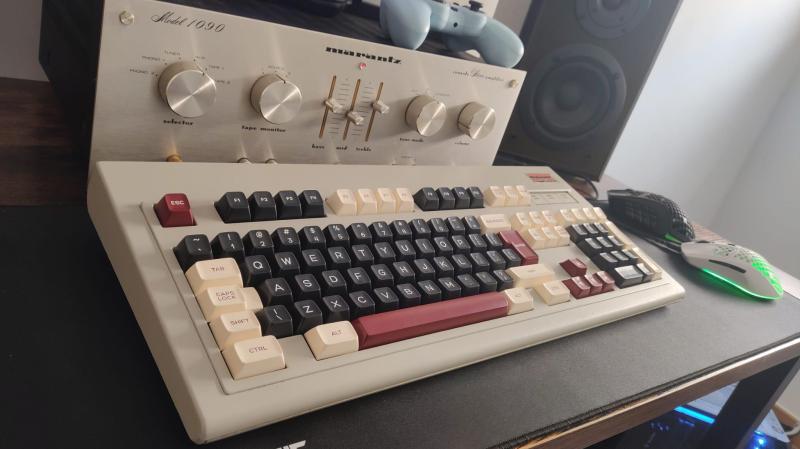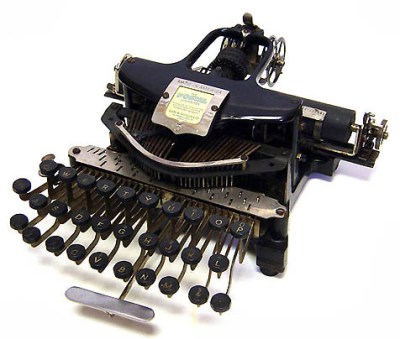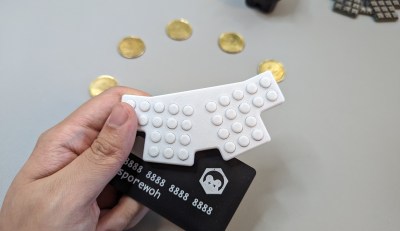
So, how do they feel? There is a slight wobble to them, according to [Leo_keeb] — it’s a bit like pressing the left or right side of Tab. But the actuation is smooth, they say.
As you can see, these resin keycaps weren’t designed with the typical Cherry MX profile in mind, they are made for the Topre capacitive key switches of the HHKB. (No, those aren’t weird rubber domes.)
When I asked about sharing the STLs, [Leo_keeb] advised me that they might be willing to release STLs for Cherry MX switches in the US layout if there is enough interest.
Make Your Photos Suck Less

[CaviteTech] is here to tell you that your current keyboard photos (probably) suck, and offers part one of a new series on taking great ones. You can check out the short video below.
So far, the advice seems solid: use a couple of props, and consider using a desk mat. Take pictures in the best light you can, and go outside if you have to, but shoot in the shade. As far as the shots themselves go, [CaviteTech] likes to take more than they think they’ll need, starting with a top-down shot and moving into side profile and angled shots. Finally, they suggest taking a few shots with one or more keycaps removed in order to show off the switches. This might be as important as good lighting, if you ask me. Check out part one below.
The Centerfold: Cherry, Box Navies, and a marantz

Do you rock a sweet set of peripherals on a screamin’ desk pad? Send me a picture along with your handle and all the gory details, and you could be featured here!
Historical Clackers: Going Postal

No, this machine wasn’t meant to be used in post offices. The best guess out there regarding the name is that the Postal was supposed to be a good typewriter for correspondence. Works for me.
Following in the footsteps of the previous Keebin’, this is another affordable portable compared to standard-sized machines which cost around $100. The Postal premiered in 1902 for $25 ($27.50 if you wanted the veneered oak case). I think it looks cooler without. In today’s dollars, that’s almost $800 compared to the equivalent of three grand for a standard machine.
The Postal company touted this machine the “only” low-priced typewriter with a universal keyboard (as in QWERTY), powerful manifolding, and mimeograph stencil cutting. Alas, the machine was quite popular in the US and abroad.
They say imitation is the sincerest form of flattery. As Antikey Chop points out, the Postal looks like the unholy union of a Blickensderfer, a Franklin, a Hammond, and a Keystone. As much as it may resemble the Blickensderfer, the Postal has a ribbon instead of an ink roller, and of course, it has a QWERTY keyboard instead of the DHIATENSOR layout. But the fundamental mechanism is more like the Hammond: each key press raises slightly on one of the long, thin index pins behind and above the keyboard. Then the typewheel rotates until the feeler arm hits the raised-up index pin, and then the typewheel goes to the printing point and prints.
ICYMI: Cheap Business Keyboard Makes You Look Anything But
 I think [sporewoh] is guaranteed to be king of the next meetup with this teeny inexpensive keyboard they were able to make for about $5 total.
I think [sporewoh] is guaranteed to be king of the next meetup with this teeny inexpensive keyboard they were able to make for about $5 total.
The secret sauce is in the microcontroller — the CH552T, which costs about a dollar and only requires two capacitors to get running.
The other secret is in the switches. This isn’t [sporewoh]’s first tiny-keyboard rodeo, and so they did a cost analysis of the previous build and found that the most expensive bit is by far the switches. Where [sporewoh] once used Panasonic EVQP0N02Bs, they switched them out for G-Switch GT-TC063F-H035-L30 SMD switches because they are slightly cheaper.
Unfortunately, that choice would come back to haunt [sporewoh], because they require greater travel and actuation force, and are scratchy and unreliable to boot. Another trick to keep the cost down — the overall board is less than 100 mm x 100 mm, which triggers a discount at a certain PCB fab house.
Got a hot tip that has like, anything to do with keyboards? Help me out by sending in a link or two. Don’t want all the Hackaday scribes to see it? Feel free to email me directly.

















“Alas, the machine was quite popular in the US and abroad.”
What’s wrong with the Postal typewriter having been popular in the US and other parts of the world?
https://dictionary.cambridge.org/dictionary/english/alas
Transforming a staggered keyboard into an ortholinear keyboard is a pretty cool idea. I suspect it’d be a bit more wobbly than a regular mechanical key setup. Ortholinear layouts are the reason I started getting mechanical keyboards though so I don’t have any old ones that need retrofitting. It would be a cheap way for people to test whether they’d like ortholinear though, so that’s extra nice.
I often wonder at the decision to have the left leaning stagger continue into the right half and have not the slightest hint of the split of each hand’s domain. We can’t have a gap (gasp) just hide it. The right lean would definitely make more sense for the right hand. Considering that design likes symmetry (faucets on each side of the spigot etc.) it’s odd they left that out.